Research: Interseeding Cover Crops to Corn in NW Iowa
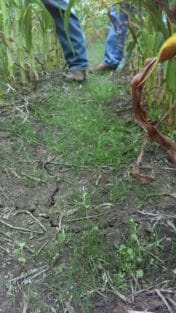
Methods
This research was conducted by Robert Alexander who farms near Granville in Sioux County.
Treatments included three cover crop mixes seeded into corn around the V5-V6 stages of development and corn with no cover crop seeded (control).
- 6-way mix: cowpeas, spring peas, crimson clover, cereal rye, forage collards, rapeseed
- Indy mix: annual ryegrass, radish, crimson clover
- Hodgepodge: Sunn hemp, vetch, mung beans, winter peas, chick pea, clover, millet, oats, triticale, barley, cereal rye, radish, turnip, rapeseed, mustard, buckwheat, safflower, flax
- Control: no cover
These treatments were implemented in a randomized complete block design with each treatment replicated four times in the field.
- Corn planting date: May 19, 2015
- Corn planting population: 34,000 seeds/ac
- Pre-emergence herbicide: Dual
- Cover crop interseeding date: June 23, 2015
- Post-emergence weed control: Inter-row cultivation (also incorporated cover crop seed) on June 24, 2015
- Corn harvest date: Nov. 4, 2015
Interseeding was accomplished with an airseeder mounted on an old sprayer (photos below).
Results
At Robert’s, cover crop seed was incorporated with the final inter-row cultivation pass on June 24. The covers emerged and by one month later had produced noticeable growth (photos below). “Crimson clover in all treatments appeared to germinate the best,” Robert notes. “But it did not seem to do too well after the canopy closed. Annual ryegrass and radish in the Indy Mix seemed to show the most promise. There wasn’t much there after harvest but you could make out those two species in strips.”
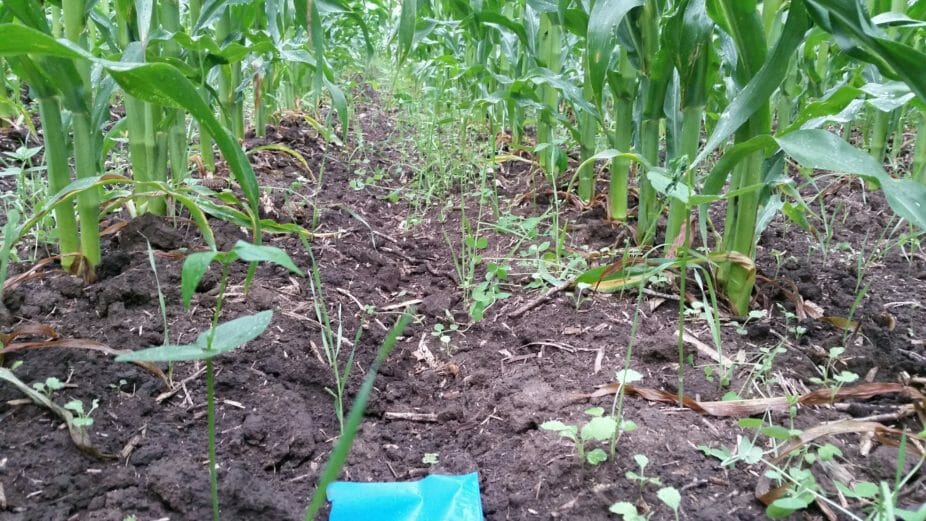
6-way mix on July 16, 2015.
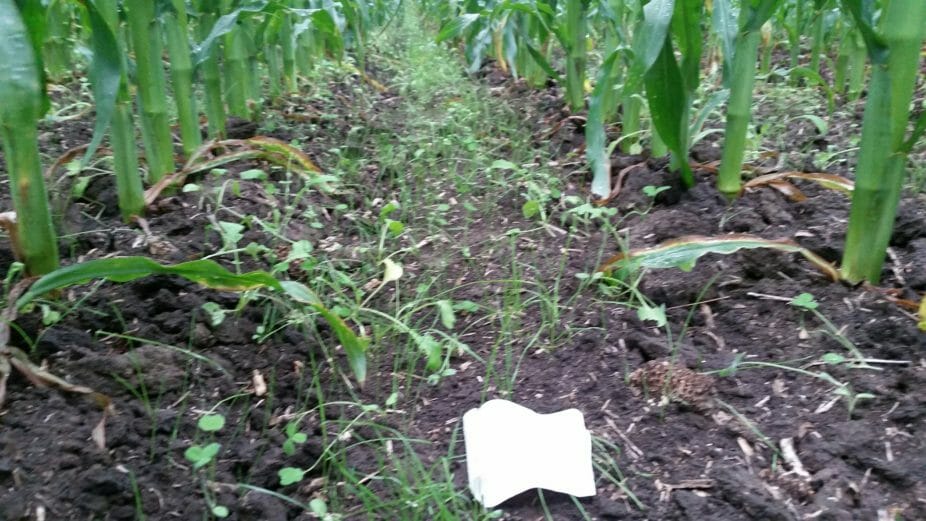
Indy mix by July 16, 2015.
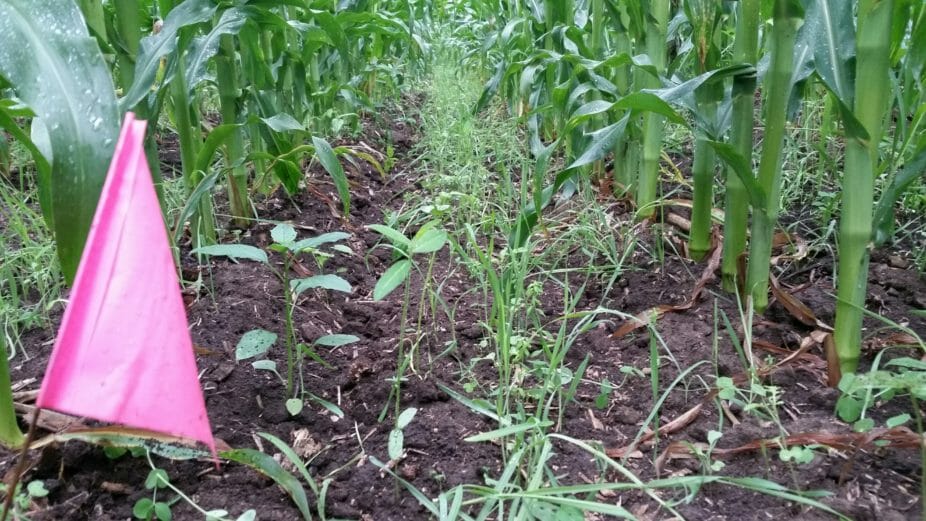
Hodgepodge by July 16, 2015.
Robert also thinks he could have seeded the covers earlier than he did. “I think I would have been able to cultivate once a little earlier and then seed the covers closer to the V3 stage. This would let me stay more ahead of the weeds and give the covers a little more time and light to grow.
“The radishes also seemed to be clustered in spots–a bunch came up in some areas but then there were also bare areas with no radishes. This may have had to do something with soil type and/or herbicide carryover.”
Corn yields from the four treatments are shown in the figure below. Corn was not affected by the interseeded cover crops.
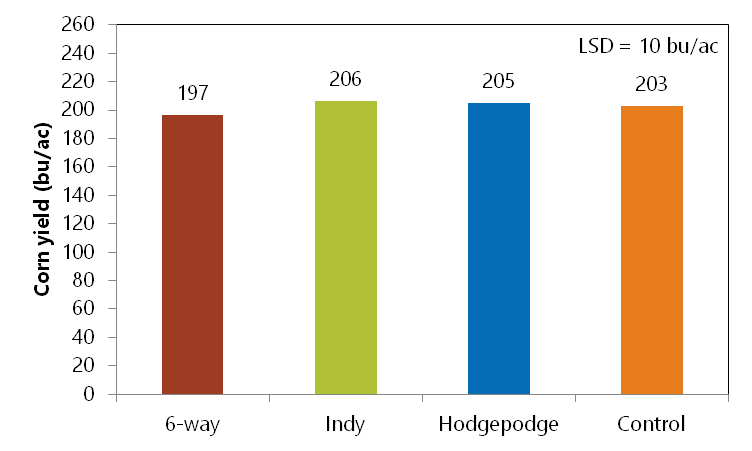
There was no significant difference in corn yield among the four treatments.
Final Thoughts and Next Steps
Robert’s goal for interseeding covers into his corn was to reap more growth in the fall which would provide more forage for cattle. “We run 30-35 head of cattle and generally put them out on the corn stalks. I wanted to know what else I could put out there for them to eat other than stalks and cobs.
“Getting a shot of rain right after cultivating and incorporating the cover crop seed was lucky. This year I am about to interseed radish, crimson clover and annual ryegrass after already cultivating twice. I’ll cultivate again to incorporate. I think that seeding earlier in the corn’s growth cycle and keeping the weeds down early will help this be more successful.”
